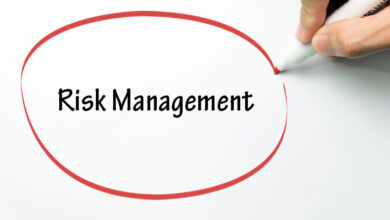The Truth Behind Canvas: Can It Really Spot Cheating?

Introduction: Canvas has become a popular learning management system (LMS) used by educational institutions around the world. With the rise of online education, the need to ensure academic integrity has become paramount. Many students and educators alike wonder whether Can Canvas Detect Cheating. In this article, we will delve into the capabilities of Canvas as an anti-cheating tool and examine its effectiveness.
Understanding Canvas’s Cheating Detection Features
Canvas’s creators have implemented various features to help identify potential instances of cheating. While it’s important to understand that no system is foolproof, Canvas does provide several tools that can assist in detecting academic dishonesty.
Plagiarism Detection
Canvas utilizes a plagiarism detection tool that can analyze written assignments and compare them against a vast database of existing sources.
The tool highlights potential matches or instances of text similarity, allowing instructors to review and evaluate whether plagiarism has occurred.
However, the effectiveness of this tool largely depends on the quality and comprehensiveness of the database it references.
Activity Tracking and Suspicious Behavior Analysis
Canvas tracks student activity within the system, including logins, clicks, and time spent on assignments.
Unusual patterns, such as multiple logins from different locations or an unusually high completion speed, can be flagged as potential signs of cheating.
However, it’s important to note that certain activities, such as group collaboration or legitimate assistance, may appear suspicious but are not necessarily indicative of cheating.
Limitations and Challenges of Canvas’s Cheating Detection
While Canvas provides valuable cheating detection features, it also has its limitations. It’s crucial to be aware of these limitations and understand that relying solely on Canvas may not guarantee the identification of all instances of cheating.
Manual Assessment Required
Canvas’s cheating detection tools provide instructors with potential red flags, but the final determination of whether cheating occurred often requires human intervention.
Instructors need to review flagged instances, consider contextual factors, and make a judgment based on their expertise and knowledge of the subject matter.
Time Constraints and False Positives
The sheer volume of assignments and student submissions can make it challenging for instructors to thoroughly assess each potential cheating instance flagged by Canvas.
In some cases, Canvas’s detection algorithms may produce false positives, indicating cheating when it hasn’t occurred. This can create unnecessary stress and burden for both students and instructors.
Supplementing Canvas’s Cheating Detection Efforts
To enhance the effectiveness of Canvas in detecting cheating, educational institutions can implement additional measures alongside the LMS. These measures can help address the limitations of Canvas’s cheating detection features.
Proctored Exams
Proctoring services can be integrated with Canvas to monitor students during online exams.
These services use webcams and audio to ensure that students are not using unauthorized resources, communicating with others, or engaging in suspicious behavior.
Proctoring can act as a deterrent and provide a higher level of assurance when it comes to academic integrity.
Assignment Variations and Customization
Creating multiple versions of assignments or tailoring them to individual students can discourage cheating.
When assignments are unique, it becomes more difficult for students to copy from one another or seek external assistance.
Automated Cheating Detection Algorithms
In addition to Canvas’s built-in cheating detection features, educational institutions can leverage automated cheating detection algorithms. These algorithms can analyze patterns in student submissions, such as similarities in answers or unusual completion times, to identify potential cheating instances. By combining these algorithms with Canvas’s existing tools, institutions can strengthen their ability to detect cheating more effectively.
Data Analytics and Anomaly Detection
Educational institutions can utilize data analytics and anomaly detection techniques to identify unusual patterns or behaviors that may indicate cheating. By analyzing data from multiple sources, such as student logins, access patterns, and submission history, institutions can flag suspicious activities for further investigation. This proactive approach helps in identifying potential cheating instances that may go undetected solely through Canvas’s standard features.
Educating Faculty on Cheating Detection Techniques
To supplement Canvas’s cheating detection efforts, institutions can provide training and resources to faculty members on effective cheating detection techniques. Educators can learn about common cheating methods, strategies for identifying suspicious behavior, and ways to conduct thorough investigations when cheating is suspected. This knowledge equips faculty members with the skills to enhance Canvas’s capabilities and make informed decisions regarding academic integrity.
Implementing Anonymous Reporting Systems
To encourage a culture of reporting and discourage cheating, institutions can establish anonymous reporting systems. Students can anonymously report suspected instances of cheating, providing valuable information to instructors and academic integrity committees. This system protects the identity of the reporter and allows institutions to address cheating cases promptly and impartially.
Some students are eager to know about How To Cheat On IXL. In such a situation there are tips and facts to explore
The Role of Education and Communication
While Canvas’s cheating detection features are valuable, fostering a culture of academic integrity and open communication is equally important. Educational institutions should prioritize educating students about the consequences of cheating and promoting ethical behavior.
Clear Academic Integrity Policies
Institutions should establish well-defined academic integrity policies that explicitly outline what constitutes cheating and the consequences for engaging in such behavior.
These policies should be communicated to students at the beginning of their academic journey and reiterated throughout their studies.
Student Engagement and Awareness
Educational institutions can conduct workshops, seminars, or online courses to educate students about plagiarism, proper citation practices, and the importance of academic honesty.
Encouraging open discussions about the ethical implications of cheating can help foster a sense of responsibility and discourage dishonest behavior.
Promoting Peer Accountability
Educational institutions can encourage peer accountability as a means to discourage cheating. Students can be encouraged to report suspected instances of cheating to instructors or academic integrity committees. This helps create a sense of collective responsibility and encourages students to uphold the standards of academic integrity within their community.
Implementing Alternative Assessment Methods
Diversifying assessment methods can help reduce the likelihood of cheating. By incorporating a mix of exams, essays, presentations, group projects, and practical assignments, educational institutions can create a more comprehensive evaluation process. This makes it harder for students to rely solely on cheating methods that may be more easily detectable by Canvas or other cheating detection tools.
Conclusion:
While Canvas offers various cheating detection features, it is not a foolproof solution. The effectiveness of Canvas in spotting cheating largely depends on a combination of its tools, instructor involvement, and supplementary measures. Educational institutions must strike a balance between utilizing technological solutions like Canvas and implementing proactive strategies that promote academic integrity. Ultimately, the goal should be to create an environment that encourages students to develop and demonstrate their knowledge honestly, with or without the assistance of Canvas.



